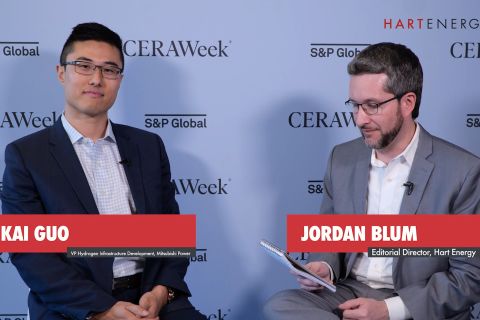A few years ago Arctic drilling was a hot topic. Countries with Arctic borders were jockeying for position, and money was pouring into developing harsh environment capabilities. Many will remember the dramatic Russian move to stake a claim, planting a Russian flag on the underwater Lomonosov Ridge.
There was good reason for the heightened interest. Statistics from the U.S. Geological Survey (USGS) indicated the Arctic could hold more than 87% of the earth’s oil and natural gas resource. USGS assessments estimated that the area north of the Arctic Circle holds approximately 30% of the world’s undiscovered gas and 13% of its undiscovered oil, most of it offshore in less than 500 m (1,640 ft) water depth.
With oil prices above $100/bbl, a host of companies were looking at Arctic opportunities, but when prices dropped, many looked elsewhere for easier plays. Among these was Shell, which announced in September 2015 that it was halting its Arctic campaign.
But not everyone called it quits. The Russians, having declared interest, were very much still in the game, and their work has paid off.
In April 2017 Rosneft began drilling the northernmost well on the Russian Arctic shelf in the Khatangsky license in the Laptev Sea, hitting oil in June. According to information from analysts at Divergente LLC, Rosneft plans to resume drilling in the Barents Sea this year and in the Kara Sea within two years in a work commitment that covers the entire Russian Arctic.
Meanwhile, Gazprom subsidiary Gazpromneft-Sakhalin is looking for fields of its own. Gazprom is operator of the Dolginskoye oil field and the North-West Block in the Pechora Sea, the Kheisovsky Block in the Barents Sea, the Severo-Vrangelevsky Block in the East Siberian and Chukhchi seas, and the Ayashsky Block in the Okhotsk Sea. Last October the operator completed an appraisal well on the Ayashsky Block, discovering a new hydrocarbon fi eld with initial in-place reserves estimated at 255 million metric tons of oil equivalent. A detailed assessment of the block, which lies on the eastern part of Sakhalin Island’s continental shelf and forms part of the Sakhalin-3 project, will be prepared by mid-2018.
The Norwegians also are part of the vanguard in Arctic development. About five months before Shell’s Arctic departure, a group of operators offshore Norway established the Barents Sea Exploration Collaboration (BaSEC). Initial participants Statoil, Eni Norge, Engie (GDF Suez), Lundin and OMV eventually were joined by 13 additional members.
Approximately 130 wells have been drilled to date in the Barents Sea with mixed results. In January 2017 Statoil discovered oil and gas with the Cape Vulture well, followed by two more finds in July. The Kayak well on the Johan Castberg license discovered between 25 Mboe and 50 Mboe of recoverable reserves, for the first time proving resources in this type of play in the Barents Sea. Statoil also discovered gas between the Snøhvit and Goliat fields with the Blåmann well, and Lundin Norway saw success on the Filicudi prospect.
With new acreage available, positive results and a stronger oil price, other operators might soon consider getting back in the game.
Recommended Reading
Exclusive: Building Battery Value Chain is "Vital" to Energy Transition
2024-04-18 - Srini Godavarthy, the CEO of Li-Metal, breaks down the importance of scaling up battery production in North America and the traditional process of producing lithium anodes, in this Hart Energy Exclusive interview.
High Interest Rates a Headwind for the Energy Transition
2024-04-18 - Persistent high interest rates will make transitioning to a net zero global economy much harder and more costly, according to Wood Mackenzie Head of Economics Peter Martin.
Scotland Ditches 2030 Climate Target to Cut Emissions by 75%
2024-04-18 - Scotland was constrained by cuts to the capital funding it receives from the British government and an overall weakening of climate ambition by British Prime Minister Rishi Sunak, said Mairi McAllan, the net zero secretary for Scotland's devolved government.
Exclusive: Mitsubishi Power Plans Hydrogen for the Long Haul
2024-04-17 - Mitsubishi Power is looking at a "realistic timeline" as the company scales projects centered around the "versatile molecule," Kai Guo, the vice president of hydrogen infrastructure development for Mitsubishi Power, told Hart Energy's Jordan Blum at CERAWeek by S&P Global.



